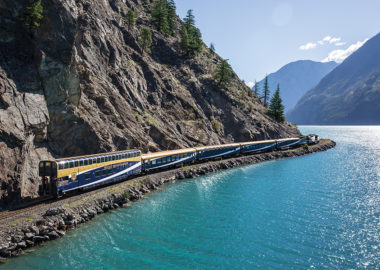
From the insatiable rediscovered appetite for vinyl to the resurgence of photographic film (check out the almost 4 million shots on Instagram with the #filmphotography hash tag) to even the cassette’s comeback (I knew I kept all those Grade 10 mixed tapes for a reason!), there has been a pushback of late against the dominance of digital.
And it’s not just offline music and film enjoying a revival. Whereas a few years ago, the publishing world was utterly disrupted by the emergence of the ebook, now, as ebook sales plateau, the sale of printed books is once again on the rise.
This trend toward the analogue, particularly among millennials, could be a reaction to many things: a desire to remain connected to the how and why of the way things work in our fast-moving world, perhaps; or an innate yearning to be unplugged and occasionally tuned out. Whatever it foretells, the news is welcome here at ECHO, where we make it our business to not just tell your story, but to do so with a variety of media, including a dear-to-us technology that hundreds of years of progress are having difficulty replacing: the printed book.
Why Print Still Matters in a Digital World
A print publication — whether a book, a magazine, or something in-between — offers a solid, tangible, and timeless proof of your history, culture, and values. It can be a calling card, too. Contently, a content marketing business and tech company, recently saw impressive results when they decided to publish a magazine. Their justification for a wholly digital business creating and producing a hugely expensive quarterly print publication? It sealed the deal on pitch after pitch when potential clients saw the quality Contently held dear and promised in their work. They walked the walk, and it paid off.
One of ECHO’s clients, JOEY Restaurants, saw similar positive results after we conceived of a glossy, story-driven magazine on the eve of their big expansion and launch in Los Angeles. The Vancouver-based company was about to foray into LA’s highly competitive restaurant scene, and they were after a little media attention. They also wanted to recruit the right staff and give new customers a glimpse into their culture and love of food. The magazine was a hit, leading to an invitation to cook at the James Beard House in New York. It didn’t hurt that its combination of high energy, compelling writing, and gorgeous food photography all spoke directly to the JOEY values of passion, quality, and hospitality.
What Makes a Print Product Different?
Don’t think we’re Luddites, by the way. At ECHO, we tell stories across a variety of platforms. And our lives and our business, of course, are inextricably tied to the digital. We all type away on our computers, communicating, scheduling, and organizing via various apps, telling ECHO’s own story through our Instagram photos, our Twitter feed, our lovingly-created video stories, and on this very blog. We do the same through story-driven content marketing strategy and production for various clients, and we offer a professional digital content strategy service for clients’ storytelling purposes, as well.
The feel, though, the smell, the ability to flip through the pages, the distinct look of photos on quality paper stock — these tangible elements of the printed object are some of the reasons people come to us when they need help telling their story. They know that their families or employees are far more likely to absorb and be inspired by the story if they can physically engage with it.
We fervently support the sharing of stories no matter the medium. And when it comes to telling yours, remember the power of print, pressure tested over the centuries.
Do you want to capture your story in a long-lasting and beautiful book? We’ve got a team of experts ready to help. Drop us a line at hello@echostories.com or give us a call at 1-877-777-ECHO (3246)





